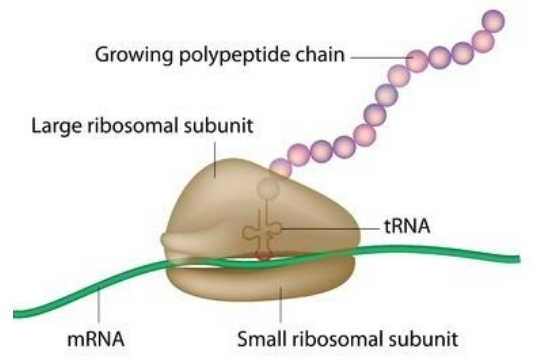
What is a stop codon and what does it do?
Answer
477.3k+ views
Hint: Translation is the process of synthesis of proteins which typically occurs in the ribosome. Translation is the process where mRNA is converted into proteins. During translation a sequence (mRNA) is read using the genetic code, which is a set of rules defining mRNA sequence to be translated into the codes of amino acids, which are building blocks of proteins.
Complete answer:
Stop codon is the codon which code for the stoppage of protein synthesis. That is the production of new proteins should stop. AUG is the stop codon which binds to the T site of the polypeptides chain and along with other enzymes binds to the end chain and acts as an inhibitor in the translation process.
The three steps are the major steps for protein synthesis. If it is reversed it is known as reverse transcriptase.
1. First step is the initiation step where a starting codon $5'$ AUG is needed; that codon is specific to amino acid methionine which is always near to the first amino acid in a polypeptide chain. At the $5'$ cap of mRNA, the small subunits of the ribosome bind and the larger subunits bind to the initiation complex.
2. Second step is elongation- ribosomes have binding sites called P site and A site. One holds the peptide chain and another accepts the tRNA respectively. Hence the elongation of the peptide began. mRNA translation works conjugation with tRNA and ribosomes both present in the cytoplasm to create protein in a process known as translation.
3. Last step is the termination step- where stop codons enter into the A site. There is no tRNA molecule binding hence, P site become hydrolyzed and releases the polypeptide into cytoplasm and small and large subunits of the ribosome dissociates.

Note:
In DNA strand the strands initiating the template specially show-case this hydroxyl. DNA sequences are long hence, maintained in a data bank. DNA sequences are placed in compact structures. Introns are in RNA which do not directly code for proteins. Introns are removed during the precursor messenger RNA or pre-mRNA.
Complete answer:
Stop codon is the codon which code for the stoppage of protein synthesis. That is the production of new proteins should stop. AUG is the stop codon which binds to the T site of the polypeptides chain and along with other enzymes binds to the end chain and acts as an inhibitor in the translation process.
The three steps are the major steps for protein synthesis. If it is reversed it is known as reverse transcriptase.
1. First step is the initiation step where a starting codon $5'$ AUG is needed; that codon is specific to amino acid methionine which is always near to the first amino acid in a polypeptide chain. At the $5'$ cap of mRNA, the small subunits of the ribosome bind and the larger subunits bind to the initiation complex.
2. Second step is elongation- ribosomes have binding sites called P site and A site. One holds the peptide chain and another accepts the tRNA respectively. Hence the elongation of the peptide began. mRNA translation works conjugation with tRNA and ribosomes both present in the cytoplasm to create protein in a process known as translation.
3. Last step is the termination step- where stop codons enter into the A site. There is no tRNA molecule binding hence, P site become hydrolyzed and releases the polypeptide into cytoplasm and small and large subunits of the ribosome dissociates.

Note:
In DNA strand the strands initiating the template specially show-case this hydroxyl. DNA sequences are long hence, maintained in a data bank. DNA sequences are placed in compact structures. Introns are in RNA which do not directly code for proteins. Introns are removed during the precursor messenger RNA or pre-mRNA.
Recently Updated Pages
Master Class 12 English: Engaging Questions & Answers for Success

Master Class 12 Business Studies: Engaging Questions & Answers for Success

Master Class 12 Economics: Engaging Questions & Answers for Success

Master Class 12 Social Science: Engaging Questions & Answers for Success

Master Class 12 Maths: Engaging Questions & Answers for Success

Master Class 12 Chemistry: Engaging Questions & Answers for Success

Trending doubts
What are the major means of transport Explain each class 12 social science CBSE

Which are the Top 10 Largest Countries of the World?

Draw a labelled sketch of the human eye class 12 physics CBSE

Explain sex determination in humans with line diag class 12 biology CBSE

The pH of the pancreatic juice is A 64 B 86 C 120 D class 12 biology CBSE

Explain sex determination in humans with the help of class 12 biology CBSE




